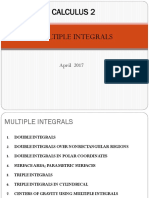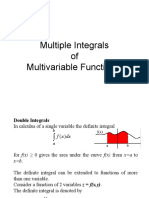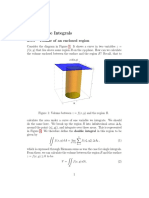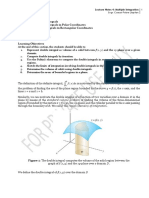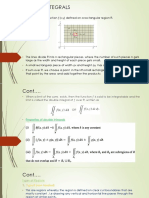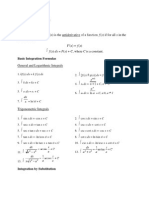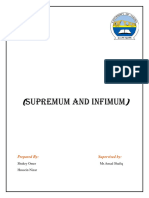0% found this document useful (0 votes)
53 views31 pagesChapter3 MultipleIntegral Part1
This document discusses multiple integrals and their applications. It covers double integrals, iterated integrals, double integrals in polar coordinates, triple integrals in Cartesian, cylindrical and spherical coordinates, and calculating moments and centers of mass using integrals. Examples are provided to demonstrate evaluating different types of double and triple integrals.
Uploaded by
ming01Copyright
© © All Rights Reserved
We take content rights seriously. If you suspect this is your content, claim it here.
Available Formats
Download as PDF, TXT or read online on Scribd
0% found this document useful (0 votes)
53 views31 pagesChapter3 MultipleIntegral Part1
This document discusses multiple integrals and their applications. It covers double integrals, iterated integrals, double integrals in polar coordinates, triple integrals in Cartesian, cylindrical and spherical coordinates, and calculating moments and centers of mass using integrals. Examples are provided to demonstrate evaluating different types of double and triple integrals.
Uploaded by
ming01Copyright
© © All Rights Reserved
We take content rights seriously. If you suspect this is your content, claim it here.
Available Formats
Download as PDF, TXT or read online on Scribd
/ 31


